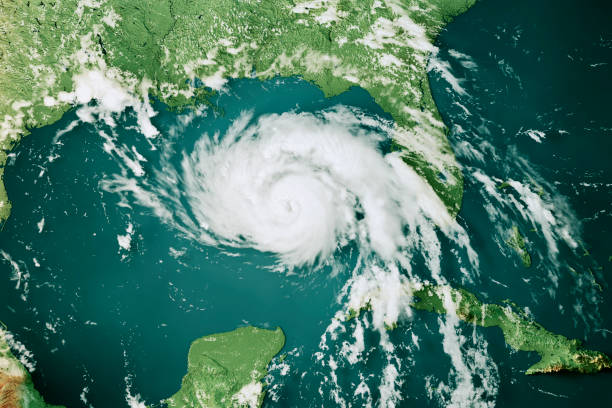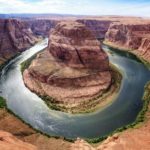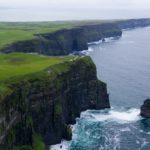With all the weather conditions, weather changes, climates, and weather facts going around, you’ll never run out of weather trivia. We’ve put together a collection of fun weather facts and trivia questions perfect for any weather (no pun intended!)
Weather Trivia
Are you familiar with things related to the weather? Here’s a look at some interesting weather trivia.
- Strong winds of intermediate duration (around one minute) are called Squalls.
- Wind The device called a baroscope is used to measure atmospheric pressure.
- The lowest recorded temperature on earth was -89.2°C recorded at Vostok station in Antarctica.
- About 2,000 thunderstorms rain down on our planet at any given minute.
Weather Trivia Questions and Answers
How many questions about extreme weather conditions and other weather topics can you answer? We’ve put together a weather quiz to find out. Check out these weather and climate quiz questions for you and your friends.
Click on the blurred area to reveal the answer.
Test it out. Click here to reveal the answer 👉 Awesome! You’re ready
| Questions | Answers |
|---|---|
| Which of the cloud types appears in the sky between 0 and 2,000m? | ▶ Stratocumulus |
| What’s the windiest place on Earth? | ▶ Cape Farewell, Greenland |
| What’s the phase of the water cycle where water vapor collects on dust particles and forms clouds which later fall as water droplets? | ▶ Condensation |
| In what year did Hurricane Katrina occur? | ▶ 2005 |
| What is the number one cause of climate change? | ▶ Greenhouse gas emissions |
| What scale is used to measure tornadoes? | ▶ the Torro scale |
| At what wind speed does a tropical storm become a hurricane? | ▶ 74 mph (119 km/hr) |
| In what month does winter begin in the Southern Hemisphere? | ▶ June |
| Which US city has been hit by the most tornadoes? | ▶ Oklahoma City |
| The highest temperature ever recorded in the United States occurred in which State? | ▶ California (Greenland Ranch, 134°F on July 10, 1913) |
| What is the lowest temperature ever recorded on Earth? | ▶ -128.6°F (-89.2°C) at Vostok Station, Antarctica |
| What is the average atmospheric pressure at sea level? | ▶ 1013.25 hPa |
| What is the hottest temperature ever recorded on Earth? | ▶ 134°F (56.7°C) in Furnace Creek Ranch, California |
| What is the average annual snowfall in Antarctica? | ▶ About 6.5 inches (16.5 cm) |
| Which ocean current is responsible for transporting warm water from the Indian Ocean to the Atlantic Ocean? | ▶ Agulhas Current |
| What is the term for a large body of air with similar temperature and humidity characteristics? | ▶ Air mass |
| What weather instrument measures wind speed? | ▶ Anemometer |
| What is the term for a large, high-pressure system that brings dry, clear weather? | ▶ Anticyclone |
| What is the term for the large-scale movement of air in the Earth’s atmosphere? | ▶ Atmospheric circulation |
| What term describes the Earth’s tilt relative to its orbit around the Sun? | ▶ Axial tilt |
| What is the name for the wind that blows in the direction opposite to the prevailing winds in a given area? | ▶ Backwind |
| What type of cloud is characterized by thin, wispy strands? | ▶ Cirrus |
| What is the term for a large-scale weather pattern that can last for several weeks or months? | ▶ Climate |
| What is the primary cause of frost? | ▶ Cold air and clear skies allowing heat to escape |
| What is the primary cause of lake-effect snow? | ▶ Cold air moving over warmer water |
| What is the term for the boundary where cold air pushes warm air upward? | ▶ Cold front |
| What is the term for the process by which water vapor turns into liquid droplets in the atmosphere? | ▶ Condensation |
| What phenomenon causes the trade winds? | ▶ Coriolis effect |
| What type of cloud is typically associated with thunderstorms? | ▶ Cumulonimbus |
| What is the term for a large, swirling storm system centered around a region of low atmospheric pressure? | ▶ Cyclone |
| What is the term for the temperature at which air becomes saturated with water vapor and condensation occurs? | ▶ Dew point |
| What is the primary cause of wind? | ▶ Differences in air pressure |
| What is the primary cause of ocean currents? | ▶ Differences in temperature and salinity |
| What is the name for the sudden atmospheric pressure drop that often precedes a storm or hurricane? | ▶ Dip in the barometer |
| What wind belt is characterized by light, variable winds near the equator? | ▶ Doldrums |
| What is the term for a strong, localized downdraft from a thunderstorm? | ▶ Downburst |
| What is the term for a prolonged period of below-average precipitation? | ▶ Drought |
| What weather pattern is associated with unusually warm ocean temperatures in the equatorial Pacific? | ▶ El Niño |
| What phenomenon is characterized by a weakening of the trade winds and warming of the eastern Pacific? | ▶ El Niño |
| What scale is used to measure the intensity of tornadoes? | ▶ Enhanced Fujita Scale |
| What is the name for the process by which water changes from a liquid to a gas? | ▶ Evaporation |
| What weather phenomenon can cause an increase in the spread of infectious diseases? | ▶ Flooding |
| What weather condition can cause poor visibility on roads? | ▶ Fog |
| What weather condition is responsible for the formation of potholes on roads? | ▶ Freeze-thaw cycles |
| What phenomenon causes the formation of ice storms? | ▶ Freezing rain |
| What is the name for the boundary between two air masses of different temperatures and densities? | ▶ Front |
| Which ocean current is known as the “river in the ocean”? | ▶ Gulf Stream |
| What large-scale circulation pattern occurs near the equator? | ▶ Hadley cell |
| What weather phenomenon can cause crop damage and reduced agricultural yields? | ▶ Hailstorms |
| Which weather condition can cause flash flooding? | ▶ Heavy rainfall |
| What weather condition can cause structural damage to buildings and infrastructure? | ▶ High winds |
| What weather phenomenon causes a heat wave? | ▶ High-pressure system |
| What is the term used to describe the amount of water vapor present in the air? | ▶ Humidity |
| What is the term for a violent and destructive storm with very strong winds? | ▶ Hurricane |
| What is the term for the continuous movement of water between the Earth’s surface and the atmosphere? | ▶ Hydrologic cycle |
| What measures humidity in the air? | ▶ Hygrometer |
| What is the term used to describe the amount of sunlight that reaches the Earth’s surface? | ▶ Insolation |
| What weather pattern is associated with unusually cold ocean temperatures in the equatorial Pacific? | ▶ La Niña |
| What is the name of the wind that blows from the land to the sea at night due to temperature differences? | ▶ Land breeze |
| What is the scientific study of weather called? | ▶ Meteorology |
| What is the term for a seasonal reversal of wind direction, typically associated with the Indian Ocean and South Asia? | ▶ Monsoon |
| What is the most common gas in Earth’s atmosphere? | ▶ Nitrogen |
| What global wind belt is found between 60° and 90° latitude? | ▶ Polar easterlies |
| What phenomenon occurs when cold air from the poles meets warm air from the tropics? | ▶ Polar front |
| What is the name given to the point in the sky from which meteors appear to originate during a meteor shower? | ▶ Radiant |
| What is the primary cause of thunder? | ▶ Rapid expansion of air due to lightning |
| What is the phenomenon that causes the sky to appear red during sunrise and sunset? | ▶ Rayleigh scattering |
| What phenomenon causes the formation of rainbows? | ▶ Reflection, refraction, and dispersion of light |
| What is the name for the visible light spectrum that is refracted by water droplets in the air, creating a rainbow? | ▶ Roy G. Biv |
| What is the name of the scale that measures hurricane intensity? | ▶ Saffir-Simpson Scale |
| What type of precipitation is characterized by small pellets of ice? | ▶ Sleet |
| Which layer of the Earth’s atmosphere contains the ozone layer? | ▶ Stratosphere |
| What is the name for the type of cloud that appears as a blanket-like layer? | ▶ Stratus |
| What is the term for the area of high pressure that typically forms around 30° latitude? | ▶ Subtropical high |
| What is the main driver of Earth’s weather? | ▶ Sun |
| What weather condition can contribute to the formation of smog? | ▶ Temperature inversion |
| What is the term for the circulation of ocean currents that distributes heat around the globe? | ▶ Thermohaline circulation |
| What weather phenomenon is characterized by a rapid, whirling wind? | ▶ Tornado |
| Northern Hemisphere and the southeast in the Southern Hemisphere? | ▶ Trade winds |
| What is the term for the boundary between the troposphere and the stratosphere? | ▶ Tropopause |
| What is the atmospheric layer closest to the Earth’s surface? | ▶ Troposphere |
| What is the name for the rotating column of air in a tornado? | ▶ Vortex |
| What global wind belt affects the movement of weather systems in the mid-latitudes? | ▶ Westerlies |
| What global wind belt is found between 30° and 60° latitude? | ▶ Westerlies |
| What weather phenomenon can cause a drop in air quality? | ▶ Wildfires |
| What is the term for a region with little or no wind, typically found near the center of a high-pressure system? | ▶ Wind calm |
| What is the name for the measure of the average speed and direction of the wind over a certain period of time? | ▶ Wind velocity |
| Which climate zone is characterized by the coldest average temperatures? | ▶ Polar |
| What is the term for the circular movement of air around a high-pressure system in the Northern Hemisphere? | ▶ Clockwise |
| What drives the circulation of ocean currents around the globe? | ▶ Differential heating and salinity |
| What is the term for a sudden, heavy downpour of rain that typically lasts for a short time? | ▶ Cloudburst |
| What natural phenomenon is responsible for the aurora borealis (northern lights)? | ▶ Solar particles interacting with Earth’s magnetic field |
| What type of cloud is associated with tornado formation? | ▶ Wall cloud |
| What is the primary factor that drives the formation of hurricanes? | ▶ Warm ocean water |
| What is the main cause of the tropical climate? | ▶ Earth’s position relative to the equator |
| Which two seasons are typically found in tropical countries? | ▶ Wet and dry |
| What type of forest is commonly found in tropical countries? | ▶ Tropical rainforest |
| What natural disaster is more likely to occur in tropical countries? | ▶ Tropical cyclones |
| Which climate classification system classifies tropical climates as Group A? | ▶ Köppen Climate Classification |
| What is the term for the coastal ecosystem commonly found in tropical countries? | ▶ Mangrove forest |
About the Author
Tim majored in Humanities with a bachelor in English and Theatre at New York State University. He lectured on entertainment business studies for three years at Plymouth College.
Tim has been a trivia host in his current hometown of Pittsburgh for the past two years. He enjoys hanging out with people who love trivia just as much as he does.
His friends call him the Question Master.













